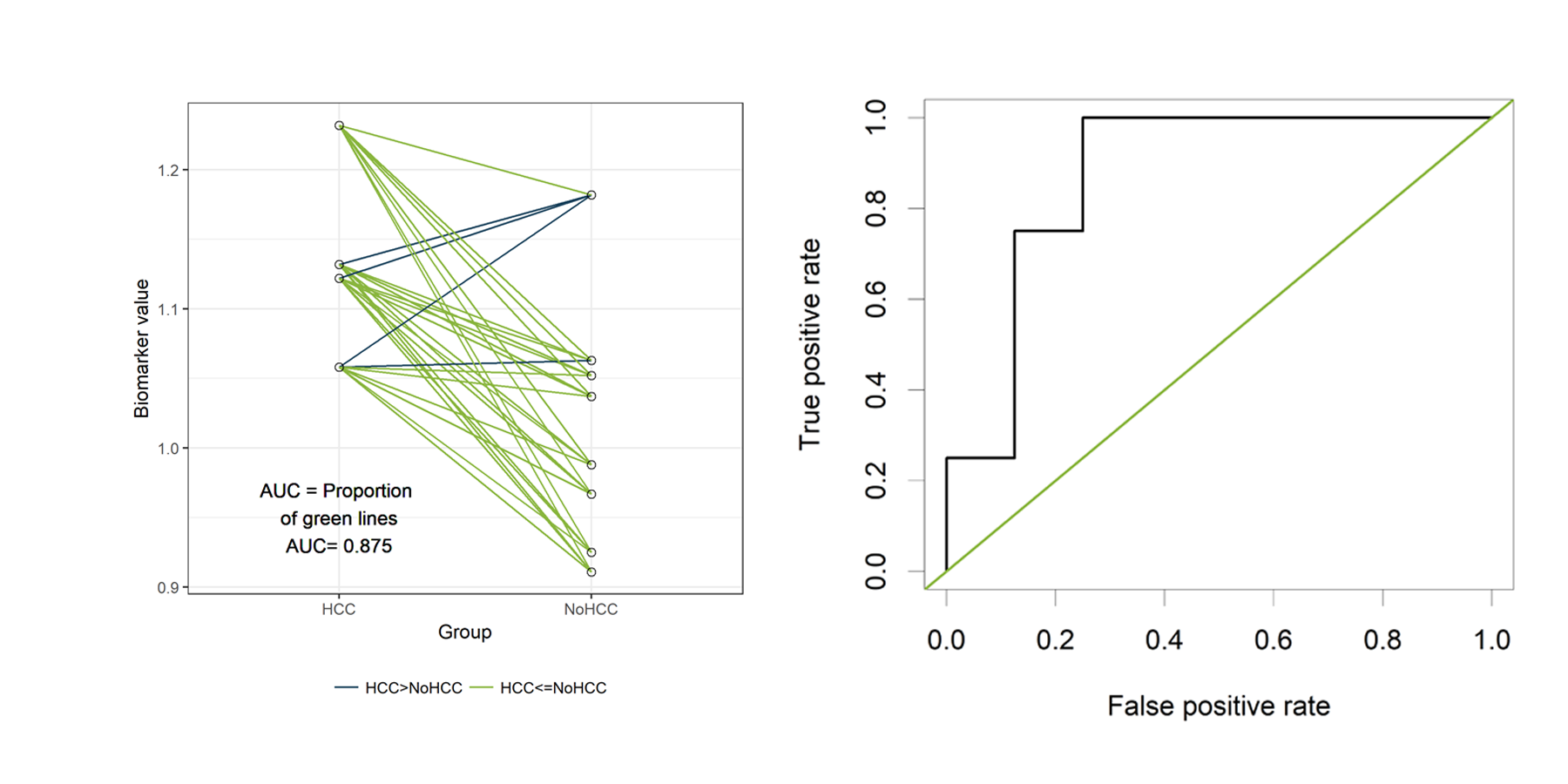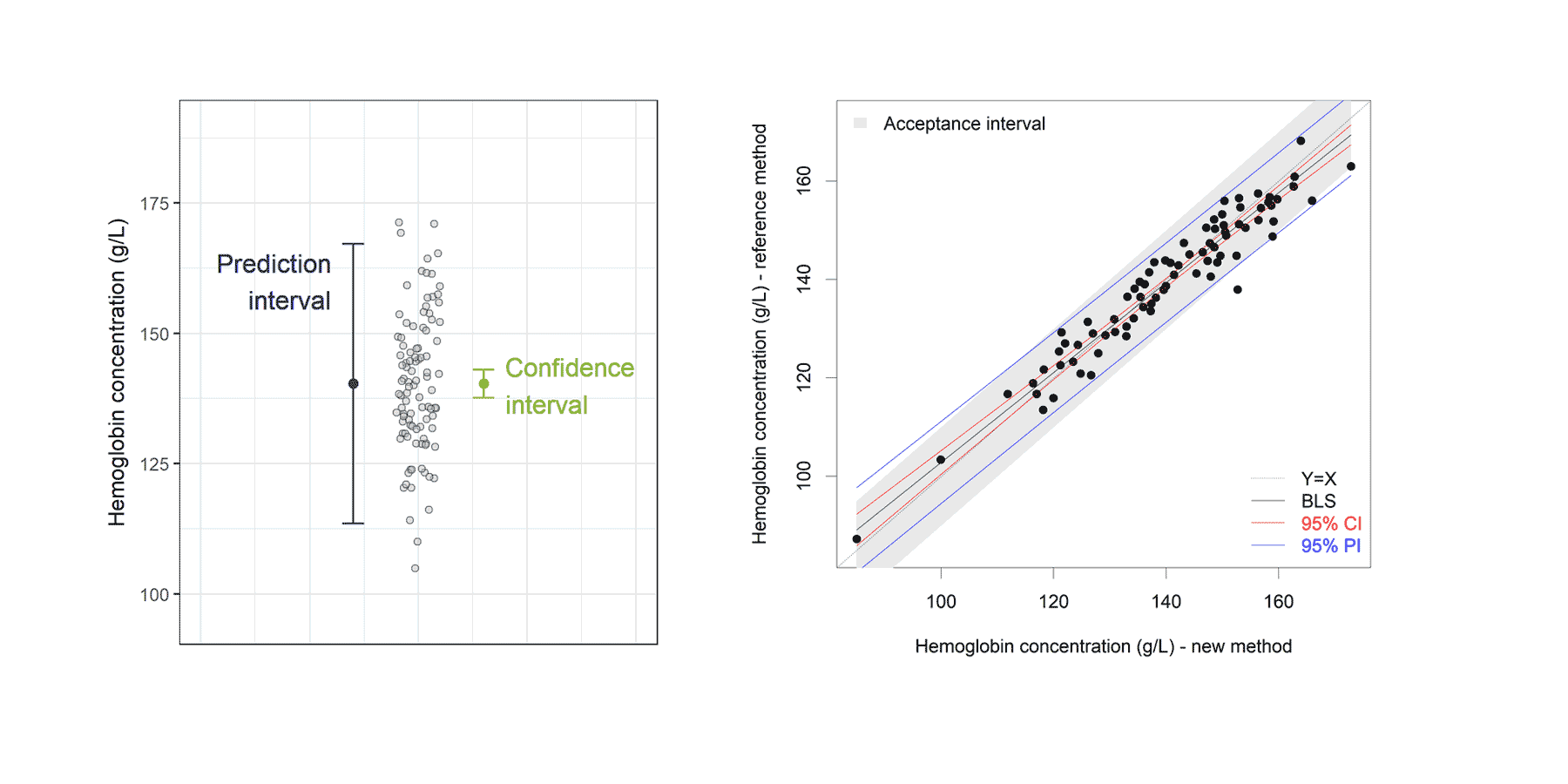-

Interpretation of the AUC
The AUC* or concordance statistic c is the most commonly used measure for diagnostic accuracy of quantitative tests. It is a discrimination measure which tells us how well we can classify patients in two groups: those with and those without the outcome of interest. Since the measure is based on ranks, it is not sensitive…
-

Prediction interval, the wider sister of confidence interval
In this post, I will illustrate the use of prediction intervals for the comparison of measurement methods. In the example a new spectral methodfor measuring whole blood hemoglobin is compared with a referencemethod.But first, let’s start with discussing the large difference between aconfidence interval and a prediction interval. Prediction interval versus Confidence interval Very often…
Welcome to my blog page.
These and other blog posts are also shared on data science + and on Rbloggers.com.
Author disclosure
Roos Colman does not work or receive funding from any company or organization that would benefit from this article. Views expressed here are personal and not supported by university or company.
